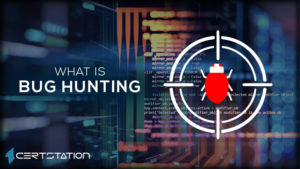
Cyberterrorism is undoubtedly one of the hottest topics being discussed these days. In fact, the terms cyberterrorism and cyber warfare have become bywords in the parlance of cybersecurity.
What is cyberterrorism?
This refers to the use of the internet in order to carry out vicious activities that either threaten or lead to grave corporal harm or even loss of life. Cyberterrorism often serves the aim to accomplish political or ideological benefits through coercion, fear and threat. Occasionally, the definition of cyberterrorism encompasses terror events like premeditated disruption of computer networks through using several tools such as worms, viruses, and phishing events.
The description and explanation of cyberwarfare is highly contingent on context and susceptible to change. When threat actors leak or steal information, penetrate the systems of regimes and large organizations, they don’t straightaway cause bodily harm to a property or an individual but the disturbance caused by such data breaks can be very, very harmful. In contrast, some specialists contend that illegitimate ways of acquiring and suppressing information should be considered as simple hacking rather than cyberterrorism since such exercises don’t cause corporal damage or distress.
Nevertheless, in a bid to handle issues produced by hackers and threat actors, a working definition is needed at least. Cyberwar is known as assaults on digital assets and/or digitally stored information of an organization that is done for political incentives, instead of financial impetuses.
How you can secure your organization against cyberterrorism
Cyberterrorism can impact or target nearly anyone, so one should always be well prepared. If you’d like to ensure that the security position of your organization is sufficient to endure tenacious and/or progressive attacks, regular checkups must be done. You should often test your security events, perceive the susceptibilities and assuage them. Furthermore, ensure to update your tools, software and firewalls frequently. You ought to come up with a disaster plan, let everybody in your cybersecurity and/or IT team to know what their roles and obligations are in case a crisis occurs. Additionally, you should never depend on a single security solution, and always have a back-up plan and back-up measure.
Irrespective of the definition or the disagreement over the presence of cyberwarfare, various nations including North Korea are known to carry out aggressive cyber actions against other nations and states.
Concerns about cyberterrorism
Cyberterrorism is becoming increasingly prominent on social media these days. Since the internet has become more prevalent in all fields of human endeavor, persons or groups can use the secrecy afforded by Internet to threaten citizens, specific groups, societies and whole countries, without the intrinsic threat of arrest, damage, or death to the invader that being bodily present would bring. Many groups use paraphernalia such as denial-of-service attack to attack and censor groups who face them, generating many worries for liberty and esteem for differences of thought.
A number of people believe that cyberterrorism is a perilous threat to countries’ economies, and fear an outbreak could possibly lead to another Great Depression. Numerous leaders concur that cyberterrorism has the highest proportion of threat over other conceivable attacks on U.S. terrain. Although natural catastrophes are considered a leading threat and have recognized to be overwhelming to people and land, there is eventually little that can be done to avert such events from happening. Therefore, the anticipation is to focus more on preemptive events that will make Internet attacks impossible for implementation.
As the Internet continues to develop, and computer systems continue to be allocated augmented obligation while becoming more complex and interdependent, disruption or terrorism via the Internet may become a graver threat and is perhaps one of the top 10 events to “end the human race.” The Internet of Things seeks to further combine the virtual and physical worlds, which some specialists see as an influential inducement for states to use extremist proxies in prolongation of objectives.
Reliance on the internet is quickly growing on a universal scale, generating a platform for global cyber terror plots to be framed and performed as a direct threat to national security. For extremists, cyber-based occurrences have discrete benefits over physical attacks. They can be carried out remotely, secretly, and comparatively inexpensively, and they do not need substantial investment in weapons, explosive and workers. The effects can be extensive and deep.
Surge in cyberterrorism likely
Events of cyberterrorism are likely to upsurge. They will be carried out through denial of service attacks, malware, and other means that are hard to envisage today. One example includes the deaths concerning the Islamic State and the online social networks Twitter, Google, and Facebook lead to legal action being taken against them, that eventually led in them being litigated.
In August 2020, it was found that some hackers suspected of working in support of the Iranian government sought to gain access to sensitive information held by North American and Israeli organizations across a wide range of sectors, including technology, government, defense, and healthcare.
Even more lately, in October 2007, hackers attacked the website of Ukrainian president Viktor Yushchenko . A fundamental Russian separatist youth group, the Eurasian Youth Movement, was held responsible for the attack. And in 1999, NATO computers were also attacked by hackers; businesses, public organizations and academic institutes were flooded with highly debated emails covering viruses from other European countries.



